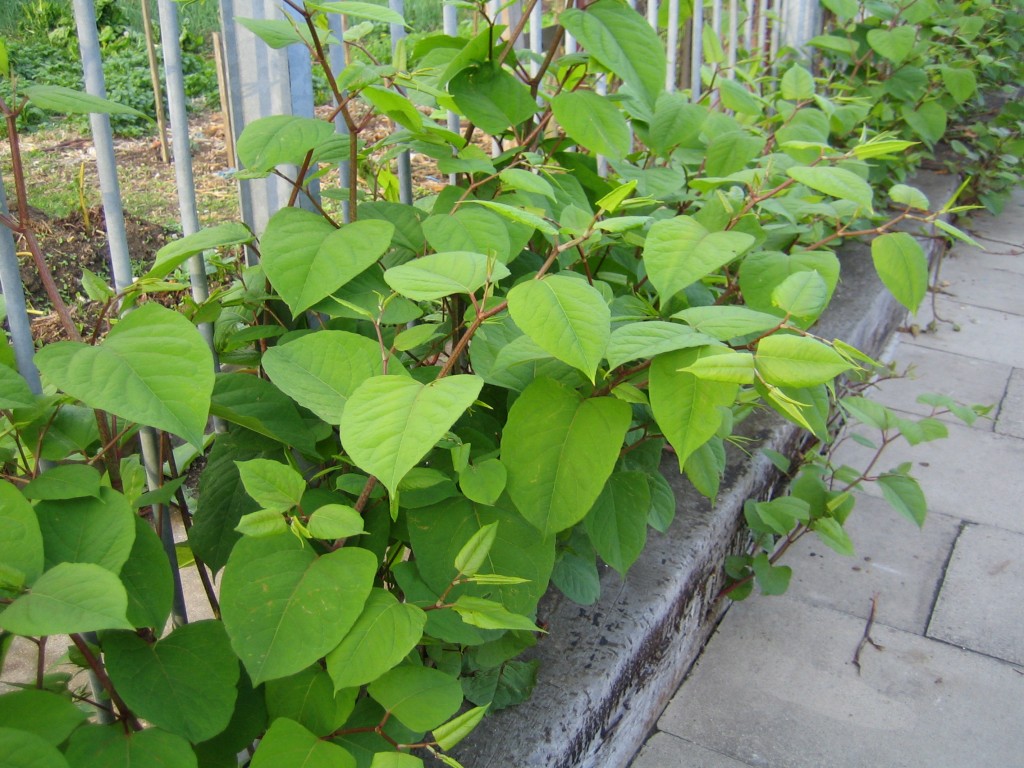Without realising it, many of us have come into contact with Japanese Knotweed – perhaps on a riverside walk or in our own back gardens. However, this apparently unassuming plant with its attractive white flowers holds a destructive secret…

How did Japanese Knotweed come to be common in the UK?
As the name suggests, Japanese Knotweed is native to Japan but was introduced to the UK in the early 19th century. The Victorians considered the plant to be attractive because of the lush green, shovel-shaped leaves and delicate white flowers, and so began growing it in their gardens as an ornamental shrub. However, they soon realised this plant was extremely fast growing (up to 10cm per day)and spreading (the roots can penetrate the ground to a depth of 3 metres and as much as 7 metres out from the base of the plant), smothering neighbouring plants and taking over gardens. The result was that the plant fell out of favour, was dug up or removed from gardens and dumped without further thought.
Why such a bad reputation?
The spread of Japanese Knotweed was initially fuelled by this uncontrolled dumping and disposal in the 19th century – when its natural resilience and ability to survive virtually any attempt to remove it were not realised. Japanese Knotweed quickly established itself in the landscape – the first record of it growing wild was in 1900, in London – and since then has spread rapidly across the UK.
Japanese Knotweed is now a serious threat to many natural habitats, especially watercourses and wetlands, due to its vigorous growth. It is believed that a new plant can be produced within 10 days from the tiniest piece of root, stem or crown. It is also capable of growing through tarmac and concrete. Furthermore, safe and complete removal can only be realistically achieved by a qualified contractor. In some circumstances, Japanese Knotweed may even prevent mortgage lenders providing the funding to purchase a property.
So how bad is the problem?
It is estimated that the total annual cost of Japanese Knotweed to the British economy is £166 million. The total cost of controlling the weed on the road network alone in Great Britain is estimated to be over £5 million. Quite a sum, considering that in addition to the road networks, 9.2% of rivers and canals in England and Wales are also infested with Japanese Knotweed (3.1% in Scotland).
The Wildlife and Countryside Act 1981 recognises the destructive and prolific nature of Japanese Knotweed, stating that it is an offence to “plant or otherwise cause to grow in the wild” any plant listed in Schedule nine, Part II of the Act – this includes Japanese Knotweed. And it is not just the planting of this weed that is controlled – its disposal is too, classing it as controlled waste.
Getting Help and Advice
The Knotweed Code of Practice is useful in helping those dealing with Japanese Knotweed to ensure that the correct procedures for disposal are followed. This Environment Agency document advises on how to clear an infested site prior to development, to avoid the minefield of legal pitfalls. It also highlights the need for proper management of an infestation. To find out more about the code, read our blog post.
If you suspect an infestation of Japanese Knotweed or would like expert advice on how to deal with it, contact Japanese Knotweed Sussex today.



